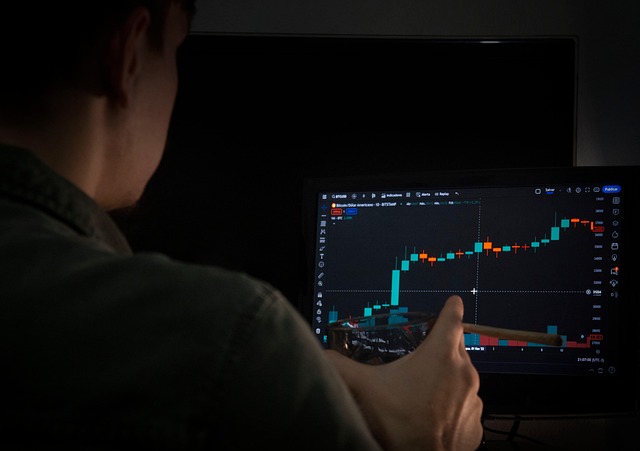Sustainable Investing: Aligning Wealth with Values
In recent years, a significant shift has occurred in the world of finance and investment, where the focus has moved beyond mere profit maximization to encompass broader social, environmental, and governance (ESG) considerations. This evolution is known as sustainable investing, a method that seeks to align wealth with values while promoting positive change in society. This article delves into the principles of sustainable investing, its growing importance, various approaches, and the impact it has on individuals, communities, and the world at large.
Understanding Sustainable Investing
Sustainable investing is an investment strategy that integrates environmental, social, and governance criteria into the decision-making process. The core of sustainable investing is the belief that investments can generate financial returns while also creating a positive impact. It is rooted in the understanding that businesses operating responsibly and sustainably are likely to be more resilient, thereby offering better long-term financial performance.
The Importance of Sustainable Investing
The importance of sustainable investing cannot be understated, as it addresses pressing global challenges such as climate change, social inequality, and corporate governance. There are several reasons why sustainable investing is gaining traction among investors:
1. Addressing Global Challenges: With the planet facing environmental degradation, social unrest, and governance failures, sustainable investing offers a proactive solution to these pressing issues. By directing funds towards responsible businesses, investors play a pivotal role in fostering sustainability and social equity.
2. Financial Returns: Contrary to the misconception that ethical investing compromises financial performance, numerous studies have shown that sustainable investments can yield competitive returns. Companies that prioritize sustainability are often more innovative, attract better talent, and are better positioned to navigate regulatory changes.
3. Increasing Awareness and Demand: As awareness of social and environmental issues rises, so does the demand for responsible investment options. Millennials and Gen Z, who are more conscious of the impact their financial decisions have on the world, are driving this shift toward sustainable investing.
4. Regulatory Pressure: Governments and regulatory bodies are increasingly advocating for sustainable practices, requiring companies to disclose their ESG performance. This regulatory pressure encourages businesses to adopt sustainable practices and offers investors more information to guide their decisions.
Approaches to Sustainable Investing
Sustainable investing encompasses a variety of strategies, each reflecting different degrees of commitment to ESG principles. Some of the most common approaches include:
Negative Screening: This strategy involves excluding specific sectors, companies, or types of investments that do not align with the investor’s values. Common exclusions include tobacco, firearms, and fossil fuels.
Positive Screening: Positive screening focuses on investing in companies and sectors that contribute positively to social and environmental outcomes, such as renewable energy, sustainable agriculture, and affordable housing.
ESG Integration: This approach involves incorporating ESG factors into the traditional financial analysis of investments. Investors consider how these factors can affect the long-term performance of a company, leading to informed decision-making.
Thematic Investing: Thematic investing centers on specific themes related to sustainability, such as clean energy or gender equality. This strategy enables investors to target specific issues they are passionate about while seeking potential financial returns.
Impact Investing: Impact investing goes a step further by actively seeking to generate a measurable social or environmental impact alongside a financial return. Investors allocate capital to projects or organizations that address specific challenges, such as affordable housing or microfinance.
How to Get Started with Sustainable Investing
For those interested in aligning their investments with their values, getting started with sustainable investing can be an empowering journey. Here are steps to consider:
Define Your Values: Begin by identifying the social and environmental issues that resonate with you. Are you passionate about climate change, social justice, or community development? Understanding your values will guide your investment decisions.
Research Your Options: Familiarize yourself with sustainable investment funds, exchange-traded funds (ETFs), and individual stocks that prioritize ESG factors. Several organizations provide ratings and rankings based on sustainability criteria to help investors make informed decisions.
Engage with Financial Advisors: Consult with a financial advisor knowledgeable in sustainable investing. They can help craft a portfolio that reflects your values while ensuring financial viability. A well-informed advisor can also provide insights into the latest trends in sustainable investing.
Diversify Your Portfolio: As with any investment strategy, diversification is key. Spread your investments across various sectors and asset classes to mitigate risk while maintaining your commitment to sustainability.
The Role of Technology in Sustainable Investing
The rise of technology has significantly enhanced sustainable investing, providing tools and resources that facilitate informed decisions. Financial technology (fintech) platforms allow investors to access a wider range of sustainable investment options, providing transparency regarding ESG metrics. Furthermore, data analytics is playing a crucial role by offering insights into company performance and benchmarking against peers.
Challenges in Sustainable Investing
Despite its numerous advantages, sustainable investing is not without challenges. Some of these include:
Lack of Standardization: The absence of standardized metrics for measuring ESG performance can create confusion among investors. Different rating agencies may use varying methodologies, resulting in discrepancies in assessments.
Greenwashing: Companies sometimes engage in “greenwashing,” presenting themselves as environmentally friendly while not making substantial changes to their practices. Investors need to be vigilant and conduct thorough due diligence to avoid being misled.
Performance Perception: There remains a perception that sustainable investments underperform compared to traditional investments. Overcoming this bias requires ongoing research and showcasing the financial viability of sustainable portfolios.
The Future of Sustainable Investing
As we look towards the future, sustainable investing is expected to continue its upward trajectory. Climate change, social injustices, and corporate governance failures are not going away; rather, they may intensify in the coming years. Investors increasingly recognize that addressing these challenges can lead to innovation, new economic opportunities, and, ultimately, a more sustainable world.
The integration of sustainability into mainstream finance is likely to accelerate as more investors demand transparency and accountability from companies. As a result, corporations will face heightened pressure to operate responsibly, creating a ripple effect on societal and environmental outcomes.
Conclusion
Sustainable investing represents a powerful convergence of finance and values, enabling individuals and institutions to create positive change while pursuing financial returns. As the world grapples with complex challenges, the need for responsible investment strategies becomes more urgent. By aligning wealth with values, sustainable investing not only fosters a better future but also enhances the resilience and adaptability of the market itself.
Embracing sustainable investing is more than simply a financial choice; it is a commitment to a more equitable and sustainable world. As awareness grows and investment strategies evolve, individuals everywhere have a role to play in this essential movement towards sustainability.





